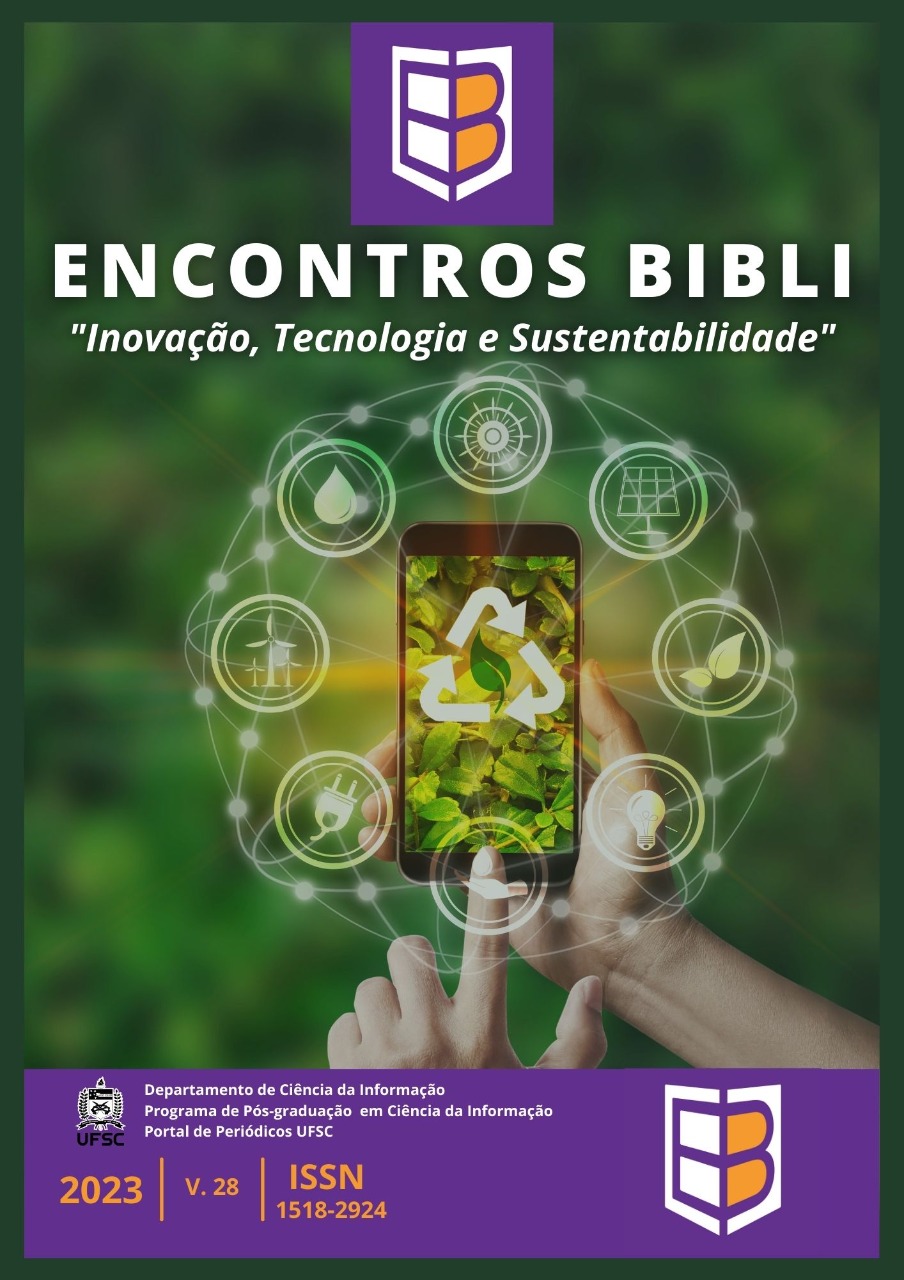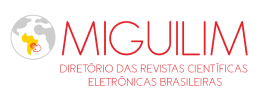Cuban scientific production in the index of citations from emerging sources: Points to include in the evaluation of national science
DOI:
https://doi.org/10.5007/1518-2924.2023.e91879Keywords:
Emerging Sources Citation Index, ESCI, Cuba, scientific production, visibility and impact, bibliometricsAbstract
Objective: the study aims to determine the visibility and the impact of the Cuban scientific production in the Emerging Sources Citation Index to contribute as necessary to include this database in the evaluation system within the process of institutional scientific evaluation in Cuba.
Method: from a descriptive bibliometric approach, we analyze the main data of the primary and citing scientific production that circulate by ESCI. The Cuban scientific production belongs to time frame covered by ESCI (2005-2021) and was delimited in the last 10 years (2012-2021).
Results: when analyzing the 19 Cuban newspapers indexed by non-ESCI, it was obtained as a result that 3 Cuban newspapers from institutions of the province of Cienfuegos stand out as the most productive (Universidad y Sociedad, Conrado Magazine and Medisur), not the same, only University and Society and the Cuban Journal of Physics reach the highest values of the h-index for a value of 5. The ESCI is a database that allows a closer approximation of the evaluation of the research in Social Sciences, taking into consideration the thematic categories that most We represent the indexed Cuban scientific production. During the period from 2005 to 2021, ESCI makes 43.4% of the Cuban scientific production visible within the main collection of the WoS, which shows that not only the main indices should be taken into account for the evaluation of scientific production in Cuba. The Cuban scientific production in ESCI has had a growing trend where the Cuban newspapers indexed in this database represent 56% of the total volume analyzed. The Cuban research visible from the ESCI affects 94% of the thematic categories according to citing scientific production, where they are corroborated by 143 countries and where the Cuban research impacts 2,452 newspapers. 40% of the self-citations in this database come from Cuban newspapers.
Conclusions: it is essential for the evaluation of two scientific processes in Cuba to include the ESCI database of the main WoS collection, taking into account the performance achieved since the beginning of the indexing of scientific production. It constitutes a source of information with levels of indexation and evaluation of the quality of journals. It is also important to consider self-citation as a phenomenon that can lead to inbreeding and harm future scientific visibility. This study presents for the first time the situation of Cuban magazines in ESCI.
Downloads
References
ARENCIBIA, R. Visibilidad Internacional de la Ciencia y Educación Superior Cubanas: desafíos del estudio de la producción científica. 2010. Tese (Doutorado em Documentação e Informação Científica) - Facultad de Comunicación y Documentación Universidad de Granada, Granada, 2010.
GREGORIO-CHAVIANO, O.; LÓPEZ-MESA, E. C.; LIMAYMANTA, C. Web of Science como herramienta de investigación y apoyo a la actividad científica: luces y sombras de sus colecciones, productos e indicadores. E-Ciencias de la Información, v.12, n.1, p. 134-157, jan./jun. 2022. DOI: http://dx.doi.org/10.15517/eci.v12i1.46660. Disponível em: http://www.scielo.sa.cr/scielo.php?script=sci_arttext&pid=S1659-41422022000100134&nrm=iso Acesso em: 24 agosto 2022.
GARG, S.; SANGWAN, S. Literature Review on Diversity and Inclusion at Workplace, 2010-2017. Vision-the Journal of Business Perspective, v. 25, n. 1, p. 12-22, dez. 2021. DOI: https://doi.org/10.1177/0972262920959523. Disponível em: https://journals.sagepub.com/doi/full/10.1177/0972262920959523 Acesso em: 25 ago. 2022.
GUVEMLI, B.; ESKIN, İ. A survey of published works in de computis (2004-2019). De Computis: Revista Española de Historia de la Contabilidad, v.18, n. 1, p. 169-185, jun. 2021. DOI: http://dx.doi.org/10.26784. Disponível em: https://dialnet.unirioja.es/servlet/articulo?codigo=8036245 Acesso em: 25 ago. 2022.
HOCEVAR, M.; BARTOL, T. Mapping urban tourism issues: analysis of research perspectives through the lens of network visualization. International Journal of Tourism Cities, v. 7, n. 3, p. 818-844, 2021. DOI: https://doi.org/10.1108/IJTC-05-2020-0110. Disponível em: https://www.emerald.com/insight/content/doi/10.1108/IJTC-05-2020-0110/full/html. Acesso em: 24 ago. 2022.
MUÑOZ-ÑÚNGO, B., et al. La presencia de la mujer en las publicaciones de Educación en Colombia: un análisis en el Emerging Sources Citation Index. Biblios: Journal of Librarianship and Information Science, v. 2021 n. 82, p. 41-50. 2021. DOI: https://doi.org/10.5195/biblios.2021.959. Disponível em: http://biblios.pitt.edu/ojs/index.php/biblios/article/view/959. Acesso em: 24 ago. 2022.
REPISO, R.; JIMÉNEZ-CONTRERAS; E.; AGUADED, I. Revistas Iberoamericanas de Educación en SciELO Citation Index y Emerging Source Citation Index. Revista Española de Documentación Científica, v. 40. n. 4, p. 1-13, 2017. DOI: http://dx.doi.org/10.3989/redc.2017.4.1445. Disponível em: http://eprints.rclis.org/33490/1/990-4576-1-PB.pdf. Acesso em: 24 ago. 2022.
RIVERO AMADOR, S. Sistema de indicadores para la gestión de la ciencia y la tecnología en la Universidad de Pinar del Río (Cuba), mediante la utilización del Curriculum Vitae del investigador como fuente principal de información. 2016. Tese (Doutorado em Documentação e Informação Científica) - Facultad de Comunicación y Documentación Universidad de Granada, Granada, 2016.
SKALABAN, A.; YURIK, I.; LAZAREV, V.; LIS, P. Analyzing Belarus science journals indexed by Science Citation Index Expanded and Emerging Sources Citation Index. Scientific and Technical Libraries, v. 11, p. 93-110, 2019. Disponível em: https://ntb.gpntb.ru/jour/article/view/505?locale=en_US. Acesso em: 24 ago. 2022.
RUIZ-PÉREZ, R.; JIMÉNEZ-CONTRERAS, E. RELIEVE: 15 years of educational research and evaluation. Relieve-Revista Electronica De Investigación y Evaluación Educativa, v. 26, n. 2, jul. 2020. DOI: https://doi.org/10.7203/relieve.26.2.18969. Disponível em: https://revistaseug.ugr.es/index.php/RELIEVE/article/view/17350. Acesso em: 25 ago. 2022.
Downloads
Published
How to Cite
Issue
Section
License
Copyright (c) 2023 María Josefa Peralta González, Orlando Gregorio-Chaviano

This work is licensed under a Creative Commons Attribution 4.0 International License.
The author must guarantee that:
- there is full consensus among all the coauthors in approving the final version of the document and its submission for publication.
- the work is original, and when the work and/or words from other people were used, they were properly acknowledged.
Plagiarism in all of its forms constitutes an unethical publication behavior and is unacceptable. Encontros Bibli has the right to use software or any other method of plagiarism detection.
All manuscripts submitted to Encontros Bibli go through plagiarism and self-plagiarism identification. Plagiarism identified during the evaluation process will result in the filing of the submission. In case plagiarism is identified in a manuscript published in the journal, the Editor-in-Chief will conduct a preliminary investigation and, if necessary, will make a retraction.
This journal, following the recommendations of the Open Source movement, provides full open access to its content. By doing this, the authors keep all of their rights allowing Encontros Bibli to publish and make its articles available to the whole community.
Encontros Bibli content is licensed under a Creative Commons Attribution 4.0 International License.
Any user has the right to:
- Share - copy, download, print or redistribute the material in any medium or format.
- Adapt - remix, transform and build upon the material for any purpose, even commercially.
According to the following terms:
- Attribution - You must give appropriate credit, provide a link to the license, and indicate if changes were made. You may do so in any reasonable manner, but not in any way that suggests the licensor endorses you or your use.
- No additional restrictions - You may not apply legal terms or technological measures that legally restrict others from doing anything that the license permits.

























